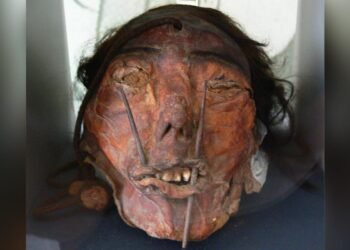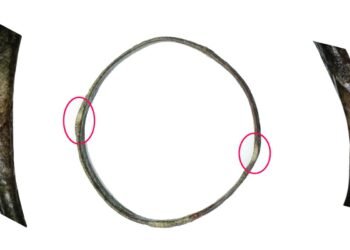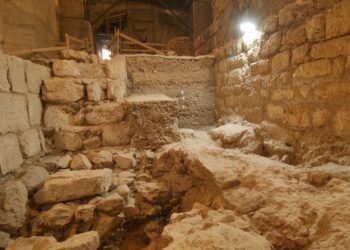A routine forest patrol in northern Thailand has led to the discovery of a cave that may rewrite our understanding of the area’s human history. In the depths of the wildlife sanctuary of Khao Noi–Khao Pradu in Phitsanulok, the new discovery site—now named Tham Ta Kueng, or Ta Kueng Cave—contains ancient rock paintings estimated to be around 2,000 years old.
The cave was found between August 14 and 16 by a group of rangers from the Phu Khat Wildlife Sanctuary during a three-day routine patrol. The mission was originally planned to deter poaching and monitor wildlife in the Khwae Noi River basin, known for its rich biodiversity. Rangers stumbled upon a sandstone cave about two kilometers away from the sanctuary headquarters, deep in thick jungle and reachable only on foot using GPS. There are no visible tracks to the site, which makes it particularly well hidden.
Images inside the cave include engravings with geometric line patterns and a distinctive three-finger pattern. Specialists at the Fine Arts Office 6 in Sukhothai are currently analyzing the images, with officials speculating that the markings may date back to Thailand’s Metal Age, centuries prior to the beginning of Thai recorded history. Though relatively few in number, the engravings appear to be well-preserved, giving rise to hopes they can provide fresh information on prehistoric occupation in the Khwae Noi River basin.
Mongkol Khamsuk, head of the Phu Khat Wildlife Sanctuary, described the find as “remarkable” and one that could make the cave a natural and cultural heritage site. “The cave is a significant natural resource and it remains a cultural and historical landmark,” he said. “More research will enable us to know more about the stories of this land, its ecosystems, and the people who may have lived here in the past.”
The Department of National Parks, Wildlife and Plant Conservation (DNP) was equally enthusiastic, calling the discovery “good news for Thai archaeology” and one that may reveal “a new dimension of research.” The department also pointed out that regular forest patrols not only conserve ecosystems but can also yield unexpected treasures of historical value.
The Ta Kueng Cave discovery follows recent finds of prehistoric rock engravings at Pratu Mueang Cliff and nearby sites, pointing to a wider pattern of early human activity in the region. While archaeologists and geologists are expected to survey the cave in the coming weeks, speculation is already growing about what secrets may lie within—from additional rock art to artifacts that could illuminate life in Thailand two millennia ago.
For now, the cave remains untouched, guarded by the jungle that concealed it for centuries. Its discovery underscores that Thailand’s wilderness still harbors secrets of both its natural and human history, biding its time—and waiting for the right eyes—to be revealed.
























Comments 0